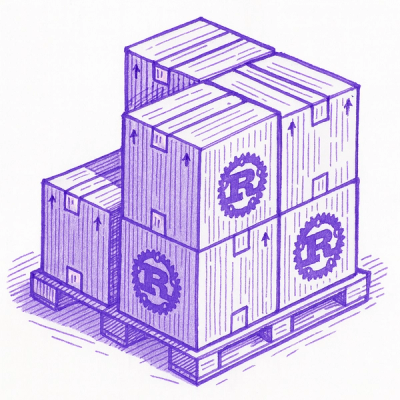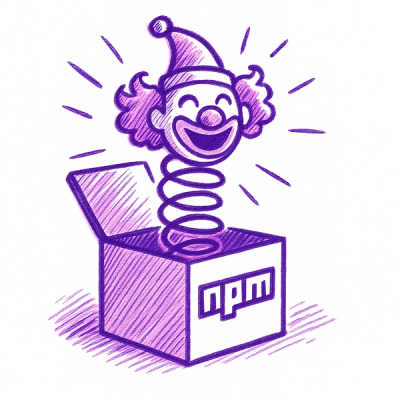
Security News
Crates.io Implements Trusted Publishing Support
Crates.io adds Trusted Publishing support, enabling secure GitHub Actions-based crate releases without long-lived API tokens.
graphql-cache
Advanced tools



A simple, modular GraphQL cache for Javascript
This project is a work in progress and is not ready for production yet. The API is likely to change over the next couple of weeks.
This is a simple GraphQL cache for Javascript. It is primarily aimed at being used in GraphQL clients for powering their underlying cache.
At the moment this is a very simple cache which only caches the tree returned by a GraphQL server, but support for normalizing entities and pagination will be coming shortly.
This library doesn't enforce state and you are responsible for handling the cache object.
Start off by initialising your cache. The cache is just a simple Javascript object. You can pass it around, persist it to disk so it can be restored for the next user session, or pass a stringified version of it down from a server side render to the client.
let cache = {}
All methods which operate on the cache are immutable, meaning you'll get a new cache instance back every time.
The first thing you'll want to do is populate the cache from a GraphQL query sent to the server. You are responsible for sending the query to the server and getting the result.
For example (this uses the graphql-tag library):
import gql from 'graphql-tag'
const query = gql`
query {
user {
id
name
}
}
`
const response = await fetch(/* your graph API */, {
headers: {
'Content-Type': 'application/json',
},
body: JSON.stringify({ query: print(query) }),
})
const result = await response.json()
result would be something like this:
{
data: {
user: {
id: '10',
name: 'John Smith'
}
}
}
Now to get this data into the cache, we need to pass in the current cache (which at the moment is an empty object {}), the result data above, and also the original query:
cache = cacheQueryResult(cache, query, result.data) // cacheQueryResult is immutable
The result of that query is now cached. Next time you want to make a query to a GraphQL server, you need to run the query through passThroughQuery so that any fields which are already in the cache are removed from the query:
const nextQuery = gql`
query {
user {
id
name
about
}
}
`
const queryForServer = passThroughQuery(cache, nextQuery)
queryForServer would now be something like:
{
query {
user {
about
}
}
}
Notice how the id and name fields have been removed since they're in the cache.
You can now send queryForServer off to your GraphQL server, and pass the result through cacheQueryResult just like we did earlier.
The cache will now contain the data from both queries. You can query the cache by doing:
const query = gql`
query {
user {
name
about
}
}
`
const data = queryCache(cache, query)
{
name: 'John Smith',
about: 'Foo',
}
There is currently a very simple middleware API which is likely to change in the future. This allows for things like entity normalization and pagination to be pluggined in a modular way.
At the moment, the only example of middleware is entity normalization.
const query = gql`
query {
user {
id
name
about
}
theSameUser {
id
interests
}
}
`
const variables = {}
const data = {
user: {
id: '10',
name: 'John Smith',
about: 'Foo',
},
theSameUser: {
id: '10',
interests: 'GraphQL',
},
}
const cache = cacheQueryResult({}, query, data, variables, normalizeEntitiesMiddleware)
const result = queryCache(cache, gql`
query {
user {
interests # this was originally on theSameUser, not user.
}
}
`, variables, normalizeEntitiesMiddleware)
// result:
{
user: {
interests: 'GraphQL',
},
}
Takes a previousCache object, query AST and data from the server (or any other GraphQL source), and merges data into the cache immutably.
variables should be the variables sent along with the query, if any.
Takes a query AST and returns a new query AST with fields removed based on what's already in the cache. If there is nothing left to query, null will be returned.
Runs the given query against the cache. Variables can also be provided.
Licensed under the MIT License.
FAQs
A simple, modular GraphQL cache for Javascript
The npm package graphql-cache receives a total of 28 weekly downloads. As such, graphql-cache popularity was classified as not popular.
We found that graphql-cache demonstrated a not healthy version release cadence and project activity because the last version was released a year ago. It has 1 open source maintainer collaborating on the project.
Did you know?

Socket for GitHub automatically highlights issues in each pull request and monitors the health of all your open source dependencies. Discover the contents of your packages and block harmful activity before you install or update your dependencies.

Security News
Crates.io adds Trusted Publishing support, enabling secure GitHub Actions-based crate releases without long-lived API tokens.

Research
/Security News
Undocumented protestware found in 28 npm packages disrupts UI for Russian-language users visiting Russian and Belarusian domains.

Research
/Security News
North Korean threat actors deploy 67 malicious npm packages using the newly discovered XORIndex malware loader.